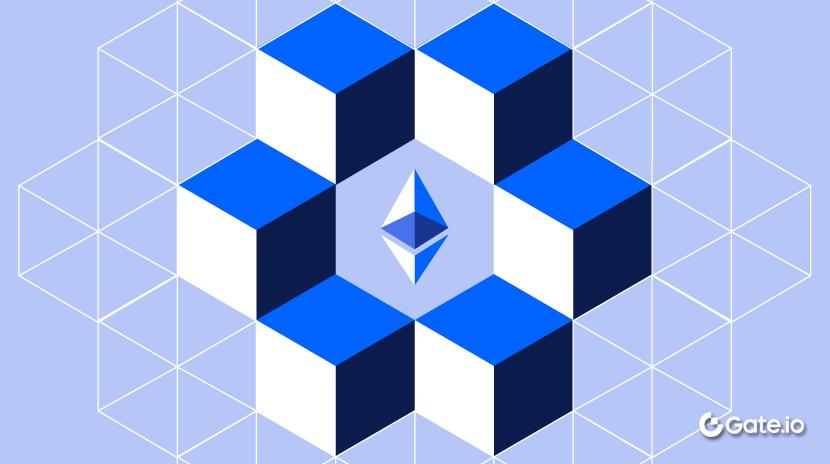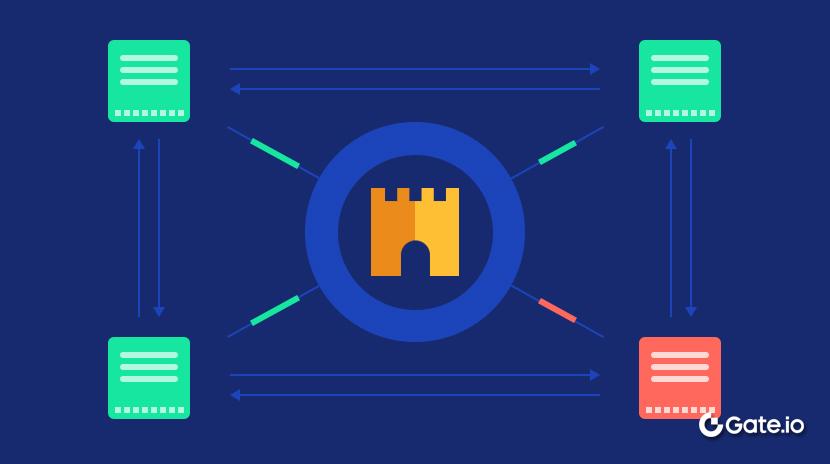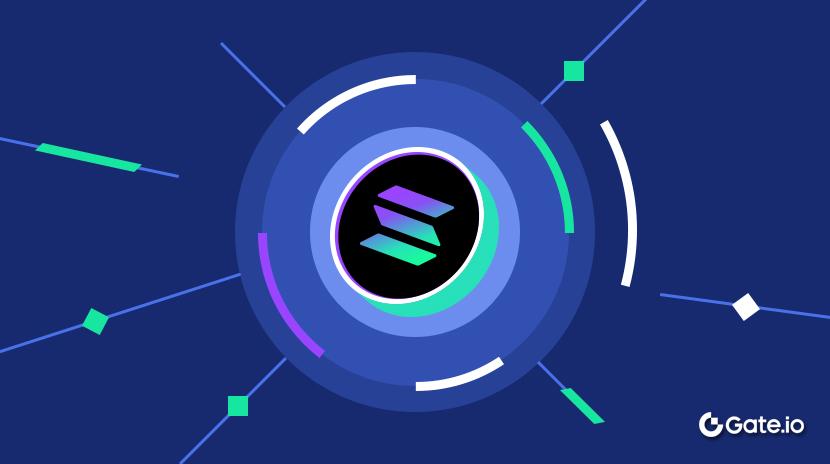DeFi Pulse Index(ディーファイ・パルス・インデックス)とは、DPIについて知っておくべきすべてのこと
DeFiパルス指数(DPI)は、イーサリアムエコシステム内でトップパフォーマンスを発揮し、積極的に開発されているDeFiプロトコルを追跡する時価総額加重指数です。分散型ファイナンス(DeFi)が進化を続ける中、主要プロジェクトのパフォーマンスを理解することは、投資家やアナリストにとってますます重要になっています。数百ものプロトコルが登場し、貸出、取引所、派生商品などさまざまなセクターで急速に展開しているため、全体的な市場トレンドと健全性を測定するための構造化された手段を持つことは重要です。キュレーションされたデータ駆動型アプローチにより、参加者はどのプロジェクトがトラクションを獲得し、長期的な生存性を維持しているかを評価することができます。関連データを集計し、流通市場価値に基づく加重方法を適用することで、DeFi PulseインデックスはDeFiエコシステムの状況と進捗を評価するための信頼できる基準を提供しています。
DeFi Pulse Index(DPI)とは何ですか?
DeFiパルス指数(DPI)は、2020年9月にデジタル資産として立ち上げられ、分散型金融(DeFi)セクターへの幅広い露出を提供するために設計されました。DeFiパルスの創設者であるスコット・ルイスとIndex Coopの創設者であるフェリックス・フォンの協力によって作成されました。彼らの目標は、主要なDeFiプロジェクトのパフォーマンスを単一の時価総額加重指数を通じて追跡するためのシンプルで透明な方法を投資家に提供することでした。DPIトークンはすぐに進化するDeFiの景色への受動的露出のための最も認識度の高い暗号通貨インストゥルメントの1つとなりました。
製品のリリースは、2020年10月6日にSet Labsによって立ち上げられた分散型自律組織(DAO)であるIndex Coopの形成に続いて間もなく行われました。Index Coopは、最も堅牢でアクセスしやすいオンチェイン投資指数を作成することを目指して設立され、DPIが最初の看板商品として提供されました。この指数は、主要なEthereumベースのDeFiトークンを慎重に選定しており、実用性が高く長期的な開発へのコミットメントを示しているものが含まれています。これにより、DPIはセクター全体の勢いの信頼できる指標となっています。
透明な方法論に裏打ちされ、分散型の貢献者コミュニティによって管理されたDPIの構築は、暗号通貨投資を簡素化する大きな前進を表しています。時が経つにつれて、Index Coopは、財務アナリスト、開発者、マーケター、DeFi愛好家など、さまざまな貢献者を含むベースを拡大し、DPIの有用性を維持し、拡大するために協力しています。DeFiが成熟し多様化する中で、DPIはIndex Coopのスイート内で基本的な製品として残り、セクターのパフォーマンスの基準としての役割を強化しています。この革新的な協力を通じて、DPIは伝統的な投資フレームワークと分散型ファイナンスの新興世界を結びつけるのに役立ちました。
DeFi Pulse Index(ディーファイ パルス インデックス)の仕組みはどのように機能しますか?方法論とメンテナンス
DeFi Pulse Index(DPI)は、時価総額加重インデックスとして構成されており、インデックス内の各トークンの表現は、他のトークンと比較した時価総額に基づいています。この重み付け手法は、実際の市場のダイナミクスを反映しており、個々のトークンの重み付けを25%に制限することで、過度の集中を回避しながら、広く採用されている貴重なDeFi資産により多くの影響力を与えることができます。そのしきい値を超える値は、残りの構成要素に比例して再配分されます。このメカニズムにより、バランスの取れたエクスポージャーを確保しながら、セクターの主要なプロジェクトをキャプチャします。DPIにはイーサリアムベースの資産のみが含まれており、DeFiスペースで最も活発で確立されたブロックチェーンエコシステムに焦点を当てています。トークンは、合成、ラップ、クレームベースではなく、無記名資産である必要があり、機能的でライブなDeFiアプリケーションに直接関連している必要があります。プロジェクトはDeFi Pulseに掲載され、透明性と運用要件を満たし、オープンガバナンスやコミュニティ参加などの分散化を実証する必要があります。さらに、セキュリティは中核的な要素であり、プロジェクトは専門的な監査を受けているか、長期的でインシデントのない運用を通じてコミュニティの信頼を確立している必要があります。
TokenSetsは、Set Protocolベースのインフラストラクチャを実装し、Ethereum上でDPIを実現し、DPIを単一のERC-20トークンとして機能させています。これにより、1つのトークンを介して多様化された保有物を提供することで、DeFiへの露出が簡素化されます。DPIの購入または償還ごとに、自動的に基礎となるインデックス構成が反映されます。このトークン構造は、現代のデジタル資産機能と伝統的な金融指数の概念的な明確さを組み合わせ、DPIを初心者から経験豊富な暗号通貨投資家までアクセス可能にしています。DPIは、分散型ファイナンスの進化と市場動向の信頼性のあるリアルタイムな反映を提供し、投資ツールと参照基準の両方として機能することを目指しています。

ソース:indexcoop.com/products/DeFi-Pulse-Index
メンテナンス
DeFi Pulse Indexは、DeFi市場の変化を代表するように、四半期サイクルで維持されています。このメンテナンスは、決定フェーズと再構成フェーズの2つの構造化されたフェーズで行われます。決定フェーズは1月、4月、7月、10月の第3週に行われます。この期間中、指数管理者はCoinGeckoを主に参照し、現在のおよび候補のトークンの流通供給を評価し、指数の収録基準に基づいて、どのトークンが収録されるか、または削除する必要があるかを決定します。この評価には、トークンの特性(供給および発行など)、プロジェクトの信頼性(コミュニティの参加やガバナンスなど)、プロトコルの基本(機能性やユーザー採用など)、およびセキュリティ対策(監査やインシデント対応など)に基づくフレームワークが使用されます。トークンは、引き続きすべての基準を満たしている必要があります。
決定フェーズに続いて、再構成フェーズは翌月の最初の営業日に開始されます。この段階では、インデックスは新しい重みに従って再調整され、追加または削除が適用されます。DPIの時価総額加重構造は、トークンの加重が市場の動きとともに自然に変化することを意味しますが、新しい主要プロジェクトや関連性の低下など、長期的な変化を説明するには再構成が不可欠です。このフェーズでは、1つのトークンに対する25%の上限が引き続き有効であり、再分配ルールによってインデックスの残高が維持されます。リバランスは、TokenSetsスマートコントラクトを使用して実行され、透明性、オンチェーン追跡、および非カストディアル機能を確保します。インデックスの資産が増加するにつれて、スリッページと市場への影響を最小限に抑えるために、将来のリバランス期間が延長される可能性があります。この規律あるプロセスを通じて、DPIはDeFiの急速なペースに合わせながら、インデックスの完全性と投資家保護の高い基準を維持しています。
DeFi Pulse Indexの使用事例
トップのDeFiプロジェクトを1つのトークンに統合することで、DPIは複雑さ、取引コスト、個々のプロジェクトのリスクを低減し、一方で完全に分散型アプリケーション全体で利用可能なままです。市場全体でDPIがどのように使用されているかを示す3つの主要なユースケースがここにあります。
- DeFiセクターへの受動的露出:複数のトークンを追跡、購入、管理する負担なしに分散型金融への幅広い露出を求めるユーザー向けに、DPIは費用対効果の高いソリューションを提供しています。投資家は、市場の変動に対応するための自動リバランスを備えたEthereum上のトップパフォーミングDeFiプロトコルへの多様なアクセスを獲得します。DPIは新参者にとって簡単な参入点を提供し、経験豊富な暗号通貨参加者にとって便利な配分ツールとなります。
- DeFi担保と収益を得る:DPIはERC-20トークンとして、DeFiプロトコルで借入、ステーキング、収益を得るための担保として広く受け入れられています。ユーザーはDPIを貸出プラットフォームやボルトに預けることで、多様化されたDeFiポートフォリオへの露出を維持しながら、収益を得ることができます。このユースケースにより、保有者はリスクを単一トークン戦略と比較して低減しながら、資本効率を最大化することができます。
- ベンチマーキングおよびポートフォリオ管理: 機関投資家、ポートフォリオマネージャー、および分析プラットフォームは、DeFiセクターのパフォーマンスを追跡するためにDPIをベンチマークとして使用しています。これは、DeFiポートフォリオや戦略の収益を評価するための中立的な基準として機能します。DPIの透明でルールベースの方法論は、分散型ファイナンスにおける比較分析とパフォーマンス測定の信頼性のある標準となっています。
DeFi Pulse Indexの主な特長
DeFiへのアクセス可能な露出
DeFi Pulseインデックスの特徴の1つは、その利便性とシンプルさです。通常、機関投資家向けで複雑なプロセスが必要とされる従来の金融構造化商品とは異なり、DPIを利用すれば、インターネット接続さえあれば誰でもトップのDeFiプロジェクトに露出できます。ユーザーは、Metamask、Argent、またはRainbowなどの人気のあるWeb3ウォレットを通じてDPIを購入することができ、多くの場合、直接銀行口座に接続するか、デビットカードを使用します。また、UniswapやSushiswapなどの分散型取引所でも広く利用可能です。このオープンアクセス構造は、分散化の原則に合致し、小売業者と機関投資家の両方にとってDeFiエコシステムへの利用しやすい窓口を提供しています。
分散化されたコミュニティ主導
DeFiパルス指数のガバナンスは、より広範なDeFiエコシステムの価値を反映しています。指数の方法論はDeFiパルスによってキュレーションされていますが、より広範な製品の決定や戦略的な更新は、インデックスコープコミュニティによって導かれています。このDAO主導の構造は透明性を確保し、誰もが提案に投票したり、改善に貢献したり、インデックスコープのフォーラムやDiscordで議論したりすることができるようにしています。このコミュニティ第一のモデルは、DPIの分散型かつ参加型な進化を支援し、通常は限られた公共の意見しか反映されない中央集権的な機関によって運営される従来の金融製品とは対照的です。
ユーティリティとセキュリティ基準
DPI内のトークンは、単純なエクスポージャーを超えて、ユーザーの安全性、市場での存在感、プロトコルの成熟度を強調する厳格な包含基準に基づいて選択されます。プロジェクトは、専門的な監査を受けるか、長期的な運用とインシデントの透明性を通じて評判の信頼を確立している必要があります。トークンを含めると、DeFiのコンポーザビリティのためにアクセス可能になり、ユーザーはイールドファーミング、流動性の提供、担保付き融資でDPIを活用できます。トークンの有用性とユーザーの安全性に重点を置くことで、DPIは信頼できるベンチマークであるだけでなく、分散型金融エコシステム内の柔軟で生産的な資産であり続けることができます。
DPIコインとは何ですか?
DPIは、主要な分散型ファイナンス(DeFi)ガバナンストークンのバスケットを追跡するように設計された構造化投資商品を表す、EthereumベースのERC-20トークンです。DeFi Pulse(現在のScalara)とインデックス協同組合DAOのコラボレーションによって2020年9月に作成されたDPIは、ユーザーに、イーサリアムのDeFiエコシステム内のトッププロジェクトに露出するためのアクセスしやすく、費用対効果の高い、多様化された方法を提供します。複数のDeFiトークンを手動で購入および管理する代わりに、投資家は、トップDeFiアセットからなるダイナミックなインデックスのパフォーマンスを自動的に反映する単一のトークンを保持することができます。
DPIトークンは、時価総額加重構造を採用しており、各構成要素の重みが市場における相対的なサイズを反映しています。インデックス内のトークンは、ユーザーの安全性、予測可能な供給、十分な流動性、および分散型ガバナンスを含むいくつかの次元で厳格な基準を満たす必要があります。合成的なもの、ラップされたもの、または派生物ベースのものではない、イーサリアム上のネイティブDeFiトークンのみが対象となります。構成要素全体での成熟度と流動性の程度を確保するため、少なくともトークンの5年間の供給量のうち7.5%が流通している必要があり、それによりインクルージョンの資格を得ることができます。
DPIはDeFi内でも生産的な資産です。トークン保有者は、UniswapやSushiswapなどのプラットフォームの取引プールにDPIとETHを供給することで流動性を提供することができます。また、追加の収益を得るためにLPトークンをステーキングしたり、CREAM FinanceやAlpha Homora V2のような貸出プラットフォームでDPIを担保として使用したり、Collateralized Debt Positions(CDPs)でDPIをロックして安定コインを借りることもできます。これらのユースケースは、投資家が収益を生み出し、資本効率を最大限に引き出すことができる一方、多様なDeFi露出を維持するのに役立ちます。
現在(2025年3月)、DPIトークンは約559,000トークンの流通供給を維持しています。現在の構成には、Aave(31.6%)、Uniswap(21.0%)、Maker(13.1%)、Ethena(12.4%)、Lido DAO(10.8%)、Pendle(5.4%)、Compound(4.5%)、Rocket Pool(1.2%)などのプロジェクトが含まれています。選択されたトークンは、DeFiエコシステムの重要な柱を表しており、それぞれが市場で大きな存在感を示しています。例えば、Uniswap(ランク#28、時価総額:$4.27B)とAave(ランク#37、$2.79B)は、それぞれ分散型取引所とレンディングの主要なプロトコルです。Ethena(ランク#42、$2.28B)は革新的な合成ドルメカニズムで急速に注目を集めており、Maker(ランク#62、$1.21B)は分散型ステーブルコイン発行の礎であり続けています。これらの資産を含めることで、DPIインデックスはDeFiセクターの確立されたトレンドと新たなトレンドを確実に追跡できます。
これらの割り当ては、インデックスが定期的にリバランスされ、進化する市場状況やプロジェクトの進展を反映するように変化する可能性があります。

ソース:indexcoop.com/products/defi-pulse-index
DPIは良い投資ですか?
DPIは、主要なDeFiプロトコルに多様な露出を提供し、単一のトークンを保有することと比較してリスクを軽減します。その構造はポートフォリオ管理を簡素化し、透明性のあるルールベースの方法論に裏付けられています。ただし、そのパフォーマンスは、引き続き高いボラティリティがあり急速な技術的変化の影響を受けるDeFi市場全体に結びついています。さらに、Ethereumネイティブの資産であるため、DPIはEthereumネットワークのコストや制約にさらされています。セクターの露出には便利ですが、DeFiの弱気サイクル中や競合エコシステムが注目を集めるときにはパフォーマンスが低下する可能性があります。
DeFi Pulse Indexのニュース
Index Coop公式ブログによると、DPIとMVIはChainlinkのCCIPを使用してArbitrumにブリッジされ、対象のユーザーにはARBリワードが提供されます。Chainlink Transporterアプリを使用してDPIまたはMVIをブリッジし保持するユーザーは、12週間で42,000ARBのシェアを獲得します。ベースブリッジングもサポートされていますが、現在のインセンティブはArbitrumに適用されます。報酬はDuneを通じて追跡し、Merklアプリを通じて請求することができます。
関連記事

ETHを賭ける方法は?



ソラナとは何ですか?

GateToken(GT)とは
